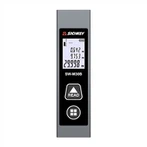How to identify the reason of a circuit breaker trip with a multimeter
The air switch typically trips for one of three reasons. malfunction, overload, and short circuit.
There are evident and even enormous sound and light phenomena, thus there is no need to measure the short circuit. If the air switch trips for this reason, see if the contacts have been damaged by the short circuit current after eradicating the source of the short circuit. Close the air switch and use a multimeter to measure the three-phase incoming and outgoing wiring terminals of the switch after disconnecting the upper-level power supply, which will leave the air switch completely discharged. You can turn on the electricity and test it whether the conduction is good. Replace the air switch, obviously, if the phase is gone.
The terminals in an air switch with a short circuit could be damaged. Measuring the insulating resistance between the terminals can be done with a megger (you may alternatively measure it with a multimeter with a gear over 20K and take off the inlets on both sides of the air switch, line, and outlet). Shaking the watch will cause the pointer to swiftly deflect to the right, which is a sign that the interphase insulation of the air switch has degraded and is no longer functional. You can test it with electricity if the insulating resistance is quite high, greater than a few megohms.
The power-on trial process is as described above. Turn on the overhauled air switch first, then turn on the front power switch after disconnecting the front power supply. The air switch may still be utilized if the power supply is normal and there are no unusual sounds or smells.
overload. One of the reasons the air switch trips frequently is overload. You will typically notice that the housing is somewhat warm, if not hot, if you contact the air switch for overload tripping with your palm. This will result in a protective action being produced by the thermal element inside the air switch.
Measure the functioning current of the air switch using the multimeter's AC current range. Replace the air switch with a greater level in accordance with the actual working current if the working current exceeds the air switch's rated current while it is still operating.
Misoperation. When the air switch's incoming and outgoing wires are aluminum, it is simple for them to oxidize with the copper terminals, which results in heat at the terminals. Heat causes the thermal protection device inside the air switch to distort, which results in a protective effect. This is a common error in judgment. As long as the copper-aluminum terminal is tightly connected to the air switch terminal and pressed into the aluminum wire, this issue can be resolved.
How to use a multimeter to measure the line, know that the automatic air switch trip is caused by a short circuit
Disconnect the air switch, turn off all the light switches (if you cannot determine the direction in which the light switch is turned on, you can also remove all the lights to avoid misjudgment caused by the resistance of the light), and turn off all the lights on the socket. Disengage the load, unplug all the plugs on the socket; use the resistance gear of the multimeter, and insert it into the jack of the socket (make sure that the air switch is in the off state, otherwise it will cause a short circuit accident, cause personal injury and damage to the multimeter), if If the reading is zero or the buzzer of the digital multimeter sounds, there is a fault in the line; according to the direction of the line, the wires in the junction box can be disconnected step by step. This junction box and the previous junction box are on this line; when it needs to be pointed out, when using this method to search, it is necessary to have a better understanding of the direction of the line and know where the upper junction box of the measurement point is.
How to check the circuit trip with a multimeter
If it trips, it will leak electricity.
Short circuit: put the multimeter in the ohm range R×10. Disconnect all the loops in the circuit and connect them to both ends of the line to be tested. If the resistance is 0, it means a short circuit.
Open circuit: the circuit is disconnected, the red test lead of the multimeter is connected to the "+" pole of the power supply, and the black test lead is connected to the "-" pole of the power supply. If the indication is also the power supply voltage, it means that the circuit from these points to the "-" pole of the power supply has no open circuit fault.
Leakage: Line leakage is difficult to measure, but you can measure the resistance of the line to the ground. If the electrical appliance leaks electricity, the neutral or live wire will generally communicate with the casing (the casing that has been grounded) or have poor insulation. It can be measured with a resistance file.






